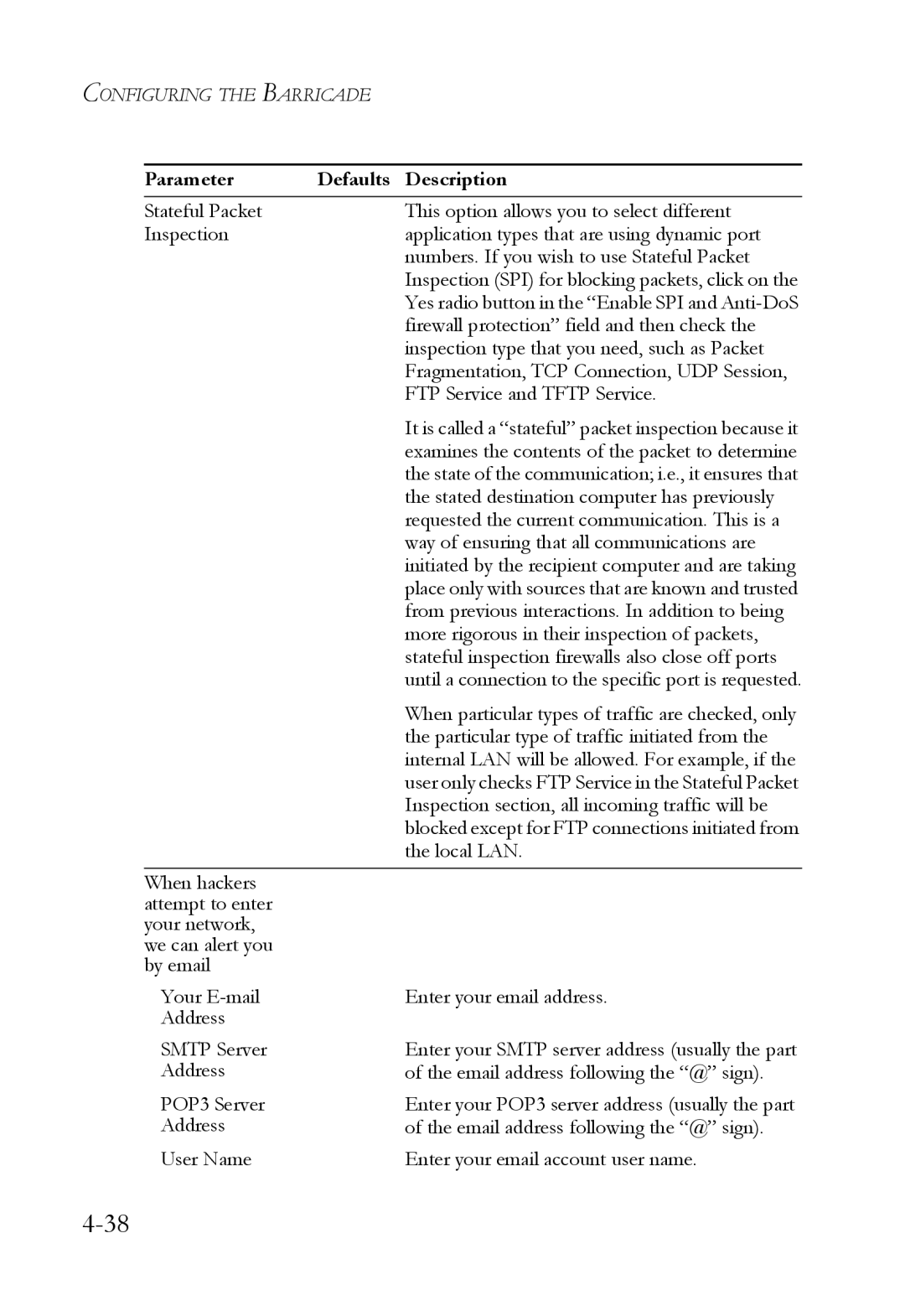CONFIGURING THE BARRICADE
Parameter | Defaults Description |
Stateful Packet | This option allows you to select different |
Inspection | application types that are using dynamic port |
| numbers. If you wish to use Stateful Packet |
| Inspection (SPI) for blocking packets, click on the |
| Yes radio button in the “Enable SPI and |
| firewall protection” field and then check the |
| inspection type that you need, such as Packet |
| Fragmentation, TCP Connection, UDP Session, |
| FTP Service and TFTP Service. |
| It is called a “stateful” packet inspection because it |
| examines the contents of the packet to determine |
| the state of the communication; i.e., it ensures that |
| the stated destination computer has previously |
| requested the current communication. This is a |
| way of ensuring that all communications are |
| initiated by the recipient computer and are taking |
| place only with sources that are known and trusted |
| from previous interactions. In addition to being |
| more rigorous in their inspection of packets, |
| stateful inspection firewalls also close off ports |
| until a connection to the specific port is requested. |
| When particular types of traffic are checked, only |
| the particular type of traffic initiated from the |
| internal LAN will be allowed. For example, if the |
| user only checks FTP Service in the Stateful Packet |
| Inspection section, all incoming traffic will be |
| blocked except for FTP connections initiated from |
| the local LAN. |
When hackers |
|
attempt to enter |
|
your network, |
|
we can alert you |
|
by email |
|
Your | Enter your email address. |
Address |
|
SMTP Server | Enter your SMTP server address (usually the part |
Address | of the email address following the “@” sign). |
POP3 Server | Enter your POP3 server address (usually the part |
Address | of the email address following the “@” sign). |
User Name | Enter your email account user name. |
